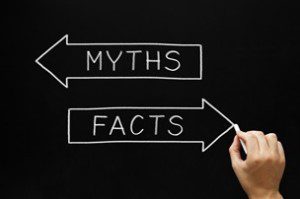Four Urban Legends of Marketing Analytics

In this age of big data, big claims and big hopes about maximizing the value of data to create sales, marketing analytics plays a central role. Despite all the attention it receives, there are some enduring misconceptions about what marketing analytics can and cannot do. Here are four top “urban legends” about how marketing analytics can boost your company’s bottom line.
Myth #1: Predictive Analytics Predicts Behavior
Customer #1106 was predicted to buy Product A, but did not buy. Is there something wrong with the analytics?? Slow down — no person or system can predict the future. The key is to understand that predictive analytics = probabilities & propensities. The goal is to improve your “batting average.”
And even a little lift makes a big difference:
One recent, individualized campaign produced a $0.42 lift over previous methods — delivering $314,700 of additional revenue. At 500K individualized emails per month, this translates to $2.6 million additional revenue per year
Myth #2: Analytic Platforms & 360° Views Required
Big Data theory: More data sources find hidden indicators and enable more accurate predictions. So collect everything, right?
Except – there is a Big Data imbalance:
80% — Of total time and cost spent on data gathering, cleansing, integration, normalization
20% — Of total time and cost spent on data exploration, analysis, modeling, testing.
The imbalance increases as more source data bloats the analysis, leading marketers on an ROI-crushing – and unnecessary — chase for more useful predictor variables and a “360° view of the customer.
Instead, to predict customers’ purchase behavior, start with their purchase history. That’s available, accurate, easy, and inexpensive to assemble on every customer, and it can generate accurate predictions. Then, introduce other customer data to the predictive models a step-at-a-time to see if/how other data might improve the results
Myth #3: Real-Time Context Triggers the Best Recommendations
Let’s say a customer visits a site page on golf bags. Time to pounce? Wait — is this customer in the market for golf clubs, dreaming about the future, checking out a friend’s new clubs, browsing for gift ideas for dad, or just checking out this retailer?
Use real-time behavior monitoring to supplement — not replace — deeper customer analysis.
Predictions require history on each customer analyzed. What if the customer has no recent behavior, opted out, or the data is sparse?
Myth #4: Personalizing 1:1 Offers is Difficult at Scale
Nope. In most marketing systems it’s easy to automate the execution of variable content with a dynamic area of the template populated by the data file from the predictive analytic process. For a direct marketing campaign that might go to thousands or millions of customers at once, the tricky part is knowing what specific message, product recommendation, or offer has the best chance of getting each customer to respond. Fortunately, there are automated cloud services that can do this quickly and easily, no matter how many customers and product you have.
Is it Worth it?
Why bother rejecting these myths to try another way? One client story shows why:
- Over 800,000 emails sent, with 250,000 emails in the control group
- Customized emails produced 3x to 4x more revenue
- Over 65% more buyers for dark and decaf vs. control group
Actual Results: $490,000 Revenue Lift
And that’s not out of the ordinary when you predict customers’ purchasing behavior by focusing on their purchase history. As our clients will testify, it’s more than worth it. And that’s no myth.
Peter Moloney is CEO of Loyalty Builders, whose Marketing Lift Service offers a simple, cloud-based predictive analytics service enabling marketers to get revenue lift from more relevant communications to their customers. Request a Free Customer and Revenue Analysis here.